First there was old-fashioned photographic film. Then came digital cameras. Now, Phone Art Qatar is pioneering a new form of photography.
Phone Art Qatar aims to introduce mobile phone photography as a contemporary art medium.
To encourage people to get involved, it holds “photowalks” that document the changing face of Qatar and explore the country’s hidden gems.
Photographer and co-founder Latifa Al Darwish says: “Qatar is growing so rapidly. It is nice to discover hidden locations that get lost, and old areas. It is good to photograph them while we still have the chance.”
The walks are held on Saturdays, and the movement has now become international, with a Phone Art group in Yemen and many other locations established. Phone Art Qatar has 6,000 followers on Instagram, with followers posting photos on the platform and tagging its Instagram handle for a chance to get featured on the page.
It also collaborates with Msheireb Museums, Qatar Foundation, and the Sheraton Grand Doha Hotel.
Latifa says: “We started two years ago and our community is growing. More than 500 people are now involved, and our members are going places. Seeing people’s different perspectives opens your mind.”
Her favourite walk was around the Al-Wakra Souq area. “It felt like we were discovering a hidden garden,” she says. “There was a nostalgic feel to the old neighbourhood streets. I had an emotional and personal connection as it reminded me of my childhood in the area. We went into abandoned houses and found old photos and old posters, relics of previous lives.
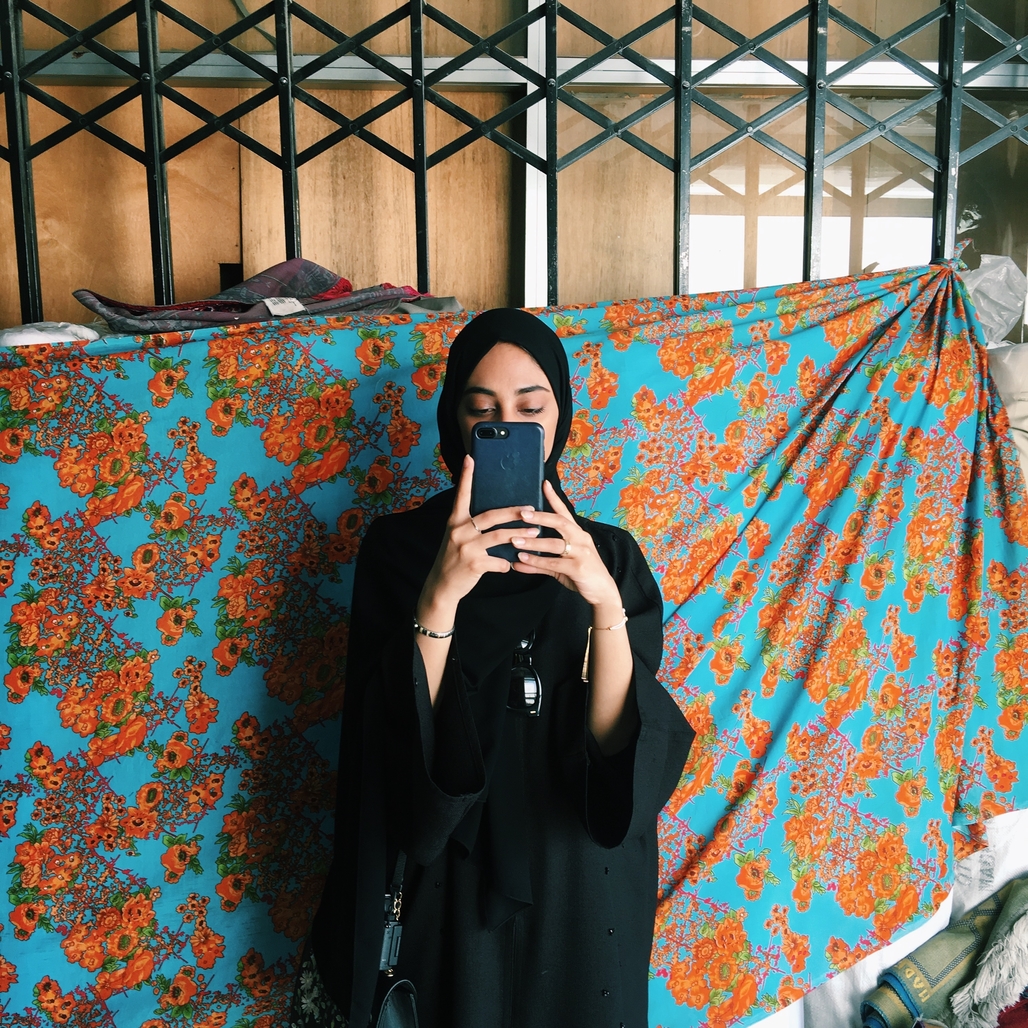
“We photographed the architecture of the 70s and 80s, documenting the designs and patterns, the layouts and old trees.
“Afterwards, someone contacted us on social media and said: ‘That was my grandfather’s house’. It is wonderful to make those connections.”
She adds: “Through photowalks, I’ve gotten to meet the photography community, as well as some very talented people who didn’t know they had this eye for photography. It is good to learn from each other.”
What is her advice for budding photographers? “Just take photos. You learn mainly from practicing. We want people to feel empowered to be able to produce art through an accessible medium.”
Follow @pa.qatar on Instagram to discover the hidden gems of Qatar and learn more about Photo Art Qatar’s photowalks.
It is a celebration of life through food. Qatar’s longest-running multicultural event, the 10th edition of the Qatar International Food Festival (QIFF), took Doha by storm this year.
Street food such as noodles and samosas shared space with the most elegant of international haute cuisine and American classics.
The sizzling of grills and heavy aroma of spices filled the night sky, as Doha residents shared food together at the vast open-air festival, in what has become a much-anticipated annual celebration for the city.
The March event brought culinary and cultural experiences from around the globe to the city, with 37 big-name chefs participating over eleven days. It highlights Doha’s growing “foodie” culture, and the role food is playing in bringing Qatar’s communities together.
Over 150 stalls were set up at Oxygen Park in Qatar Foundation’s Education City for a programme that featured not only cooking demonstrations but also musical entertainment and activities for children.
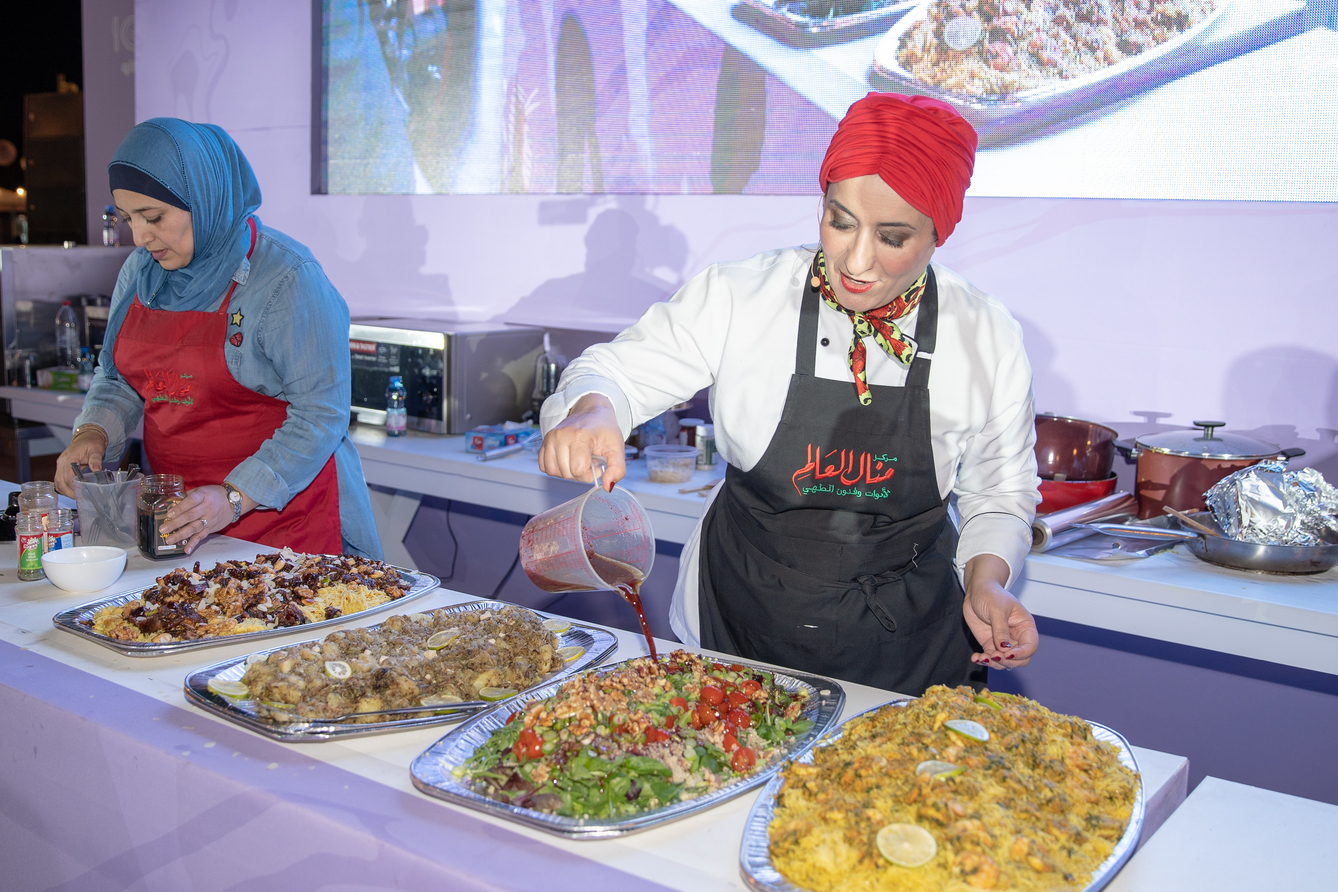
Mashal Shahbik from Qatar National Tourism Council explains why the event is important. “It’s the biggest festival in town,” she says. “Hundreds of people attend. We have live cookery demonstrations, new recipes, much Qatari inspiration, and many activities.”
“We want to have a great calendar of events, for residents and visitors alike. The fusion between cultures is celebrated and enjoyed by all.”
She adds: “Food brings people together, everyone can have their favourites. Mixed cultures are reflected in food. It unites us.”
It was above all a community event. The Torba Farmers Market brought farm-to-table experience to the festival, while local schools took part in healthy food workshops at the Qatar National Library during the celebrations.
Doha’s five-star restaurants once again offered diners the opportunity to join internationally-acclaimed chefs for an interactive cooking and tasting experience through Chef’s Table events.
The hugely popular live cooking theatre this year featured Japanese chef Masaharu Morimoto, Ireland’s Shane Macneill and French patissier and chef Eric Lanlard, among others. Celebrity chefs also hosted cooking masterclasses, showcasing specific culinary skills.
The festivities also extended to more than 90 restaurants around Qatar throughout the month of March, with special three-course menus on offer at discounted rates.
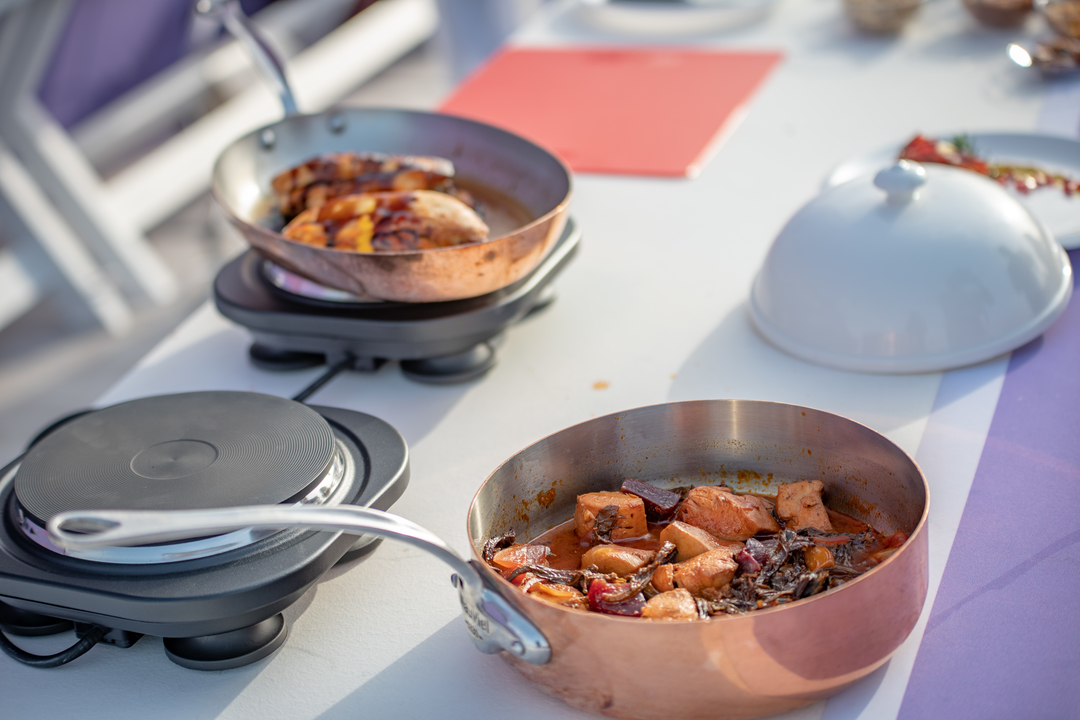
Mashal, herself a self-confessed foodie, says that all the behind-the-scenes hard work is worthwhile when crowds begin to congregate at the festival. She says: “When I watch the crowd from afar and see how people are enjoying the food, that is my proudest moment.”
She explains how the organisers keep the event fresh, a decade on. “Now, we tsake the festival to a new location every few years to give it a new look and feel and to showcase Qatar’s scenic venues. It will continue to grow bigger and better.”
There is one simple reason for the festival’s enduring success, she says, jokingly: “Everyone loves food!”
From humble beginnings to international success, the Warriors Cricket Club is a force to be reckoned with in the cricket world. We spoke to founder Kushal Kumar to find out more about the club.
To many, there is no more evocative sound than the smack of willow on leather. From the village greens of England to downtown Calcutta, cricket is a game that unites all people. And so it proves in Qatar, where the Warriors Cricket Club (WCC) is taking hold of the cricket world and bringing together communities.
WCC is one of the eight premier level cricket clubs in Qatar. It was founded in 2014 by one of the most famous and influential cricketers in Qatar history, Kushal Kumar, and is currently ranked number one in Qatar.
Kumar says that cricket is in his blood. “Cricket is a religion for any Indian,” he says. “It is the only game you can play without spending much money – all you need is a stick and a ball and a small table or chair to use as stumps. If we see an empty parking lot, we play.
“I started playing at the age of five with my dad and uncle, and I have been passionate about it ever since.”
So much so that when he arrived in Qatar, he decided to set up a team, along with his friend Sandeep Kottary. “We’d been playing soft ball cricket, and I said: ‘Let’s play some real cricket.’ I got my cousin and a bunch of friends together. There were fifteen of us.”
They entered three qualifiers and won them all. “We thought, let’s have some fun. Then we thought, let’s make history. We were the runners up in that tournament. We were the underdog playing for the first time, but we did really well,” he says. “We had nothing to lose, so we enjoyed ourselves.”
Now, from that early success, the team has 48 members from different countries. “The majority of people here are Asians,” says Kumar. “We are Indians, Bangladeshis, Pakistanis, and Sri Lankans.
“We are definitely building a community. The different nationalities here interact, we celebrate everyone’s independence day, we share food, we share our experiences of the Middle East.”
He says: “My favourite part of cricket personally is leading the team. I love planning different strategies and trying new things out in the field.”
One moment in 2017 defines the Warriors Cricket Club, and it is worthy of a Hollywood movie. Kumar is a modest man, but he beams with pride. “Our proudest moment was when we went to South Africa to play in the Cape Town Sixes. We were the underdogs and we ended up winning. It was unbelievable when I saw all the stars lining up, competing against us. Then we won the championship. Lifting the winning trophy was amazing, a milestone in our club’s history.”
Indeed, Kumar’s colleagues at Sidra Medicine were so delighted at the team’s success that they made him a huge cake to celebrate, featuring a photo of him holding up the trophy.
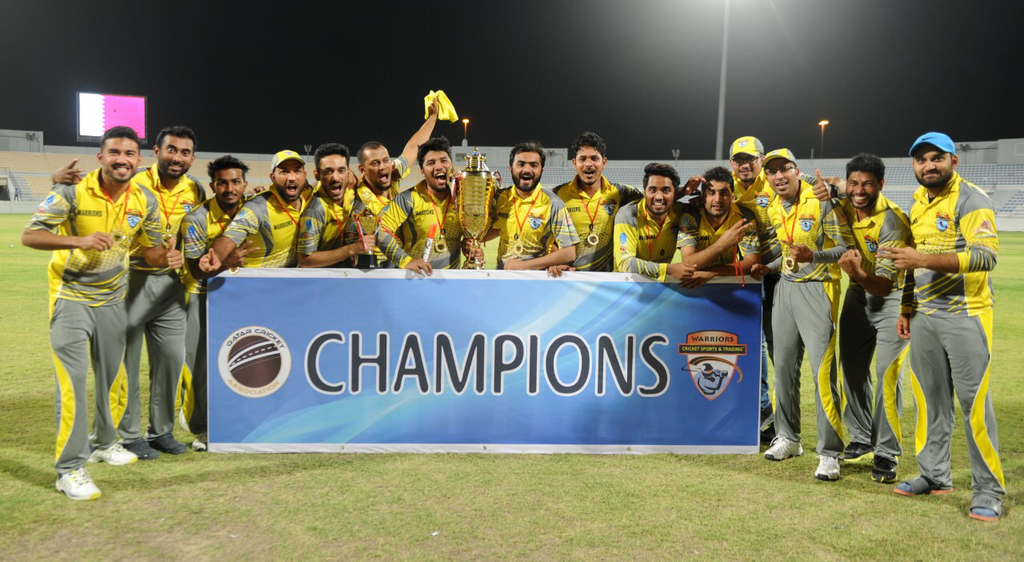
He shows me the club trophy stand, his hand sweeping excitedly along the gleaming testament to sporting glory. The Cape Town Sixes trophy stands next to the Qatar Champions League 2018 trophy. “That was very emotional, because it was the first time we were champions in Qatar,” says Kumar.
There is also one to mark a win against the Maldives national team in 2018. “The Qatar national team was busy,” says Kumar. “So they asked us to step in, and we won against the odds.”
It has certainly been an exciting journey for the club, which began playing at a Qatar Foundation cricket ground in Education City.
Kumar says: “Promoting this sport in a cosmopolitan place like Doha has many benefits. It brings together communities, breaking stereotypes. It promotes exercise and healthy living. We are blessed to have His Highness Sheikh Tamim bin Hamad Al Thani. His National Sports Day initiative is an example to other countries.”
Next, the WCC will go to play in Croatia for the first time. They hope to become a member of the Qatar Cricket Association, so they can participate in additional tournaments.
Now, the club boasts state-of-the-art facilities at its home in Old Ideal Indian School in Doha where a bowling machine spits balls out at 160 kilometres per hour.
There, the next generation of cricketers in Qatar are in training, and already showing huge promise.
Some 98 boys and girls attend the WCC’s academy, Warrior Sports Center (WSC), with five already playing for the Qatar under-19 team. The youngsters are given intensive training sessions by star cricketers at an indoor arena during the summer months. An international tour is being planned.
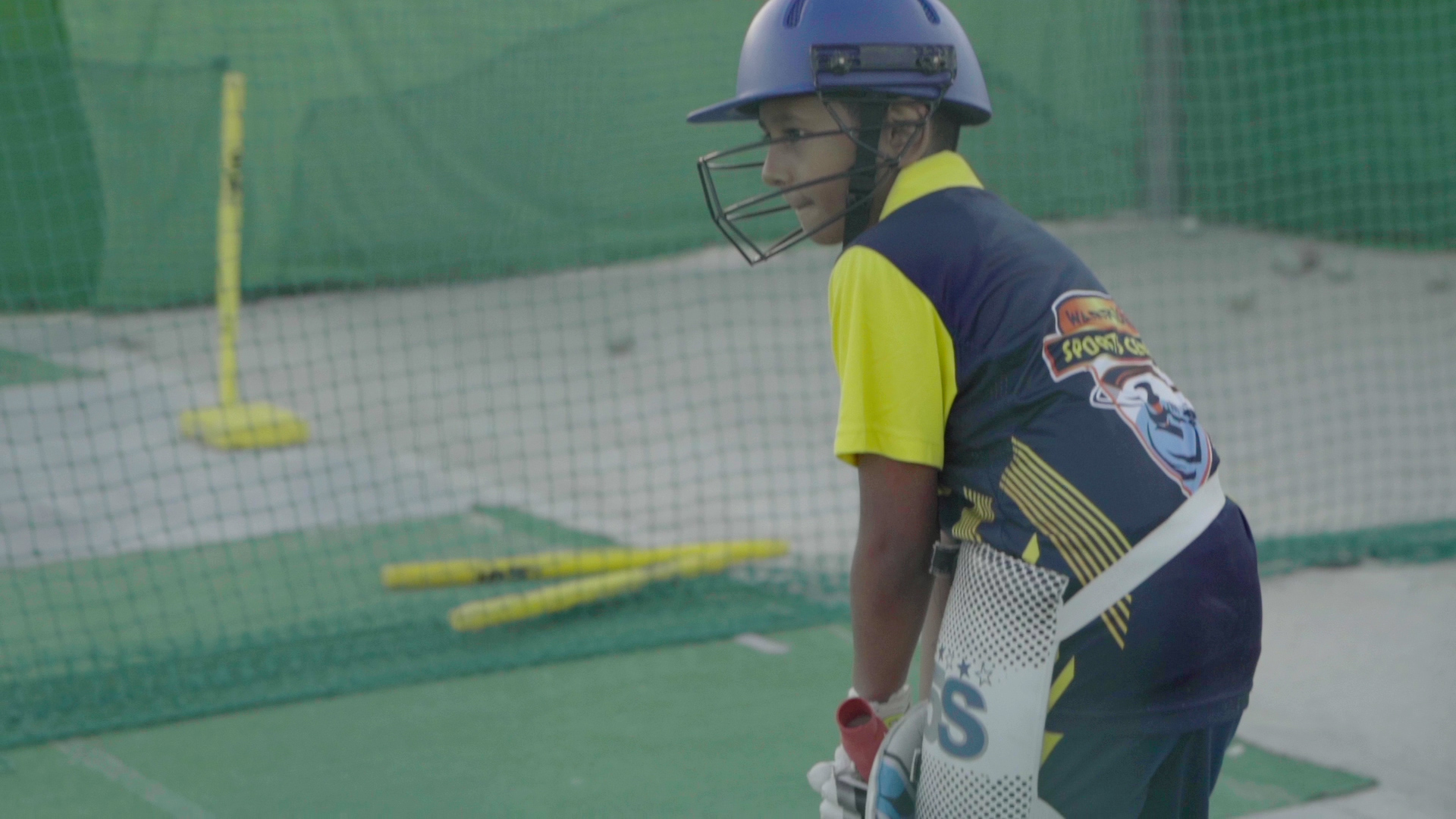
Last year, WSC organised a scholarship programme and 22 winners were selected from 200 hopefuls. They were given a year of free coaching and cricketing gear.
Kumar tells aspiring players to “always respect the game”. He says: “I tell them to respect other players and respect the game – it is a beautiful sport, never corrupt it.”
Kumar says: “Cricket has given me so much. I felt that it was time to give something in return and train the next generation. These are future warriors, and future stars. Some are super-talented, and in four or five years will be at international level. We are blessed to have them here, and my hope is that they can one day contribute to the Qatar national team, and one day that team will play in the Cricket World Cup.”
Doha Fashion Fridays showcases street portraits of guest workers in their best dress each Friday – their day off. We talk to photographer Aparna Jayakumar about the unique platform she contributes to.
From henna-haired men to the bright silk saris of Indians, Doha Fashion Fridays provides a vivid picture of modern Doha.
It is an Instagram showcase of guest workers in Doha, dressed up for their day off work. The street portraits of the workers who tell the story of individual cultures in the Doha melting pot.
It is the brainchild of Sudanese political cartoonist Khalid Al Baih, who was inspired by seeing guest workers gather on the Corniche to relax.
Doha Fashion Fridays (DFF) photographer Aparna Jayakumar explains: “One day, while walking in the Corniche, Khalid noticed how fashionable the guest workers are when they get together on the Corniche on Fridays.
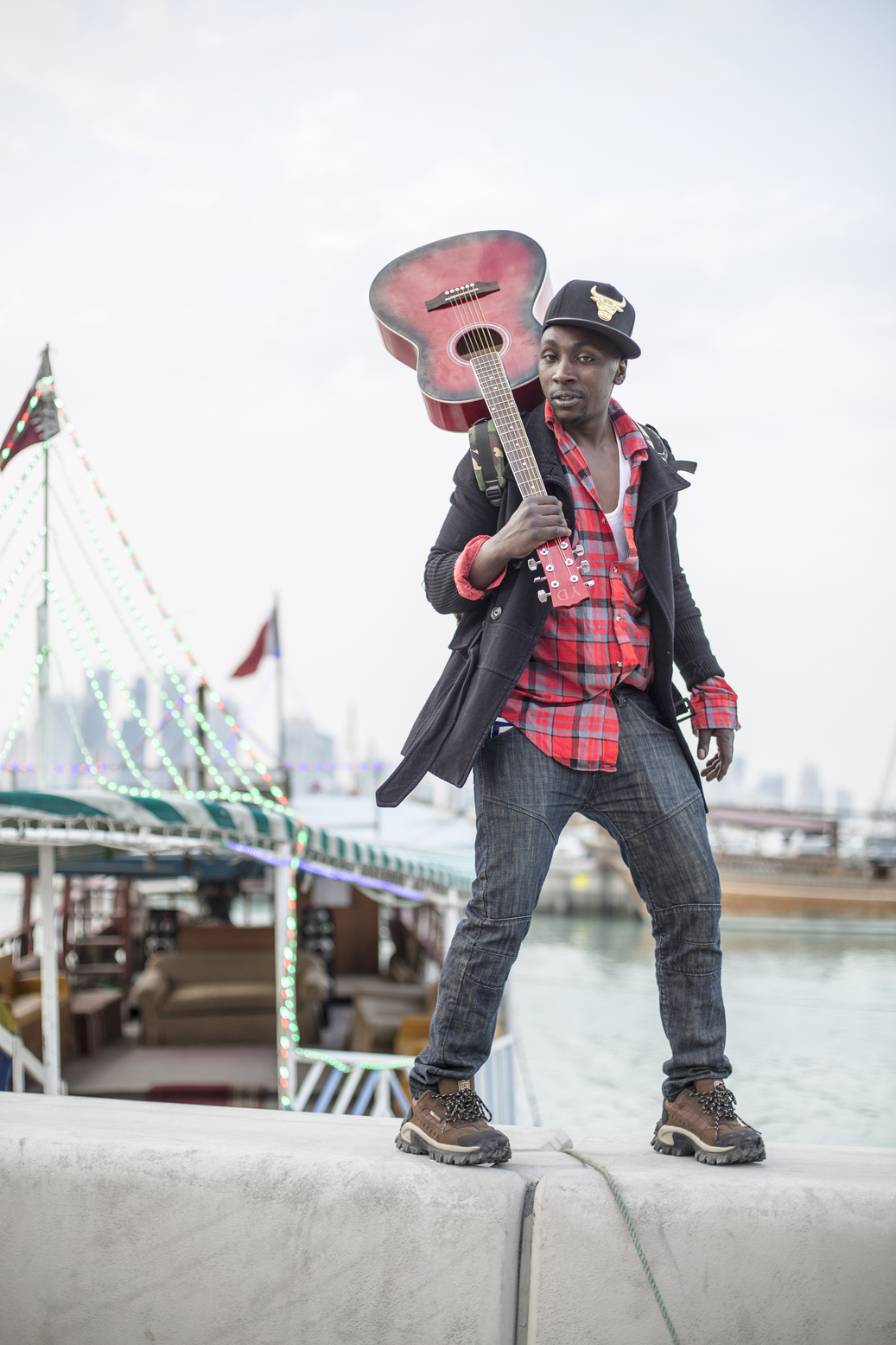
“He wanted to turn it into a project that talks about their stories via fashion, a project that is a cross between a street fashion blog and Humans of New York, and was looking for a photographer to collaborate with. When he told me about the idea, I got wildly excited and that’s how DFF began.
“I go to the Corniche and photograph men and women who catch my eye. I’m always on the lookout for the most fashionable – those who are bursting with personality and have something interesting to say.”
Aparna, who comes from Mumbai, says that she has been struck by the individuality of those she photographs, many of whom wear the traditional workers’ blue jumpsuit during the working week.
“One who stands out is Moses Mintah from Ghana with his dapper brightly coloured suit and velvet bow-tie, or the Nzume couple from Cameroon who always try to wear matching outfits.”
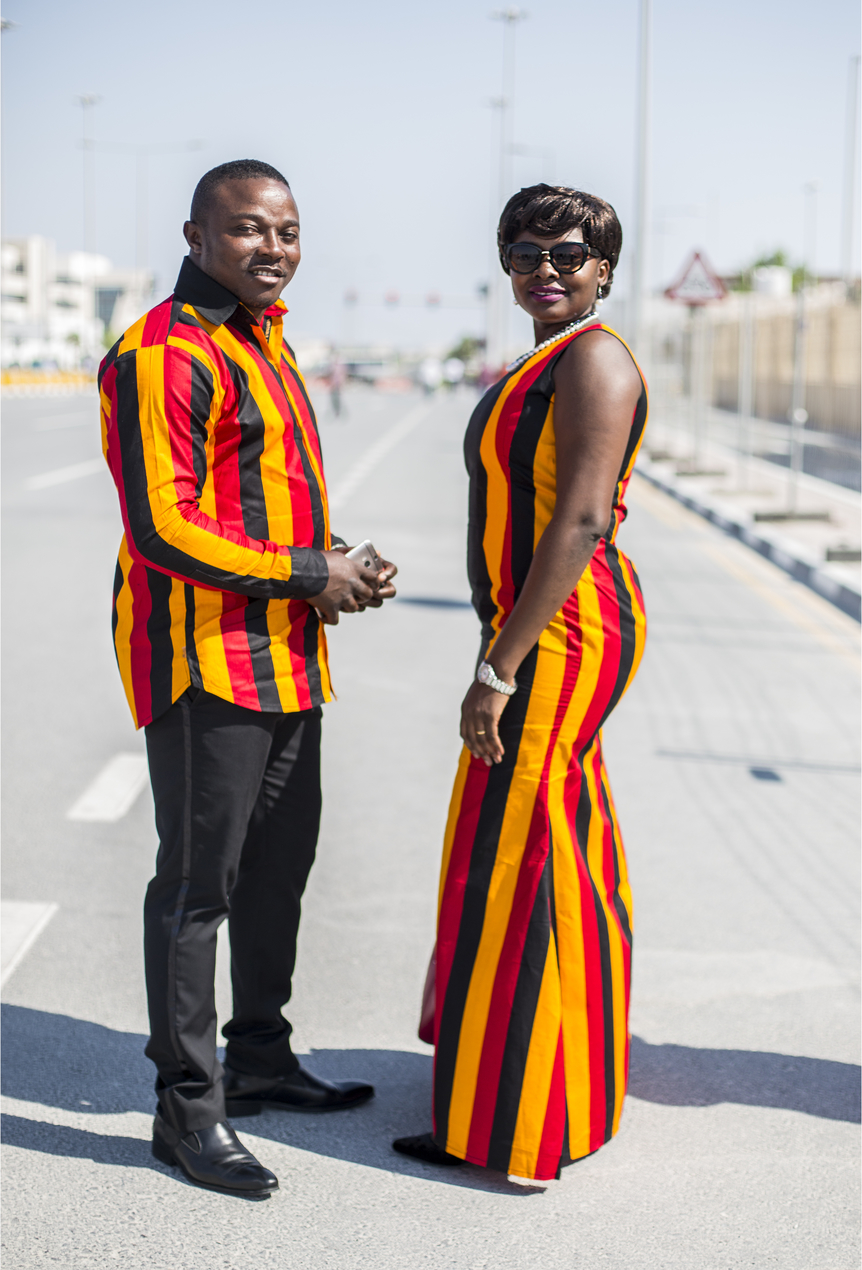
She believes that DFF, which has a growing following, can build a sense of community in Qatar. “The idea is to create awareness about the diversity of life here in Qatar,” she says.
“It is also to celebrate those members of society who might otherwise go unnoticed through the work week. If these pictures are able to transcend class barriers and celebrate diversity, that is the sense of oneness we are hoping to build.”
One group stands out: “We interact the most with Nepali migrant workers,” she says. “In Nepal, it is part of the culture to be fashionable.”
The project has been well-received internationally, with an exhibition in Russia and media attention worldwide.
But it is creating a sense of community from the individual tales of their fashion-conscious subjects that matters most to Khalid and Aparna. ‘I wanted to tell their stories,’ says Khalid, who has lived in Qatar for 25 years.
“This is a social movement. It’s about art, it’s about fashion, and it’s about bringing people together and getting to know each other better. Having style isn’t about money. It’s how you say, ‘This is me, and there’s more to me than you think there is.’”
Discover Doha’s vibrant street fashion by following @DohaFashionFridays on Instagram.
The job with the best office in the world? Qatar Airways pilot Captain Khalid Hisamuddin Alikhan talks us through his life and experiences as a pilot – originally from India, Captain Alikhan trained in the US and now lives in Doha, traveling around the world.
What do you do?
I work for Qatar Airways as a pilot. I spent two years in management and before that I was an instructor. Our crew come from all over the world – Japan, Korea, Europe, India, South America – Qatar Airways is a true multinational corporation, and so you become part of a big global family.
How is Qatar Airways different to other carriers?
The amount of thought and investment put into Qatar Airways is different to any other airline I’ve worked for. Our level of comfort as an operating crew is phenomenally high.
What do you like best about your job?
The view. It is probably the best office in the world. You can fly for twenty-five years and still never get tired of what you see out of the cockpit window. I like going to different parts of the world, but if you asked me to pick one destination, I would say Venice. It is a great place to visit because of the culture, history and people.
Which is your favourite airport?
The best airport in the world is Hamad International in Doha. It is not only a good airport, but the minute I touch down, I feel that I am home. I have lived in Qatar for ten years, with my family.
What inspired you to become a pilot?
When I was six or seven, I accompanied my grandfather on a business trip. It was extremely exciting. I was strapped into my seat, and the minute the pilot started the take-off, I was in love. The feeling of being pushed back into my seat, the acceleration – I was entranced.
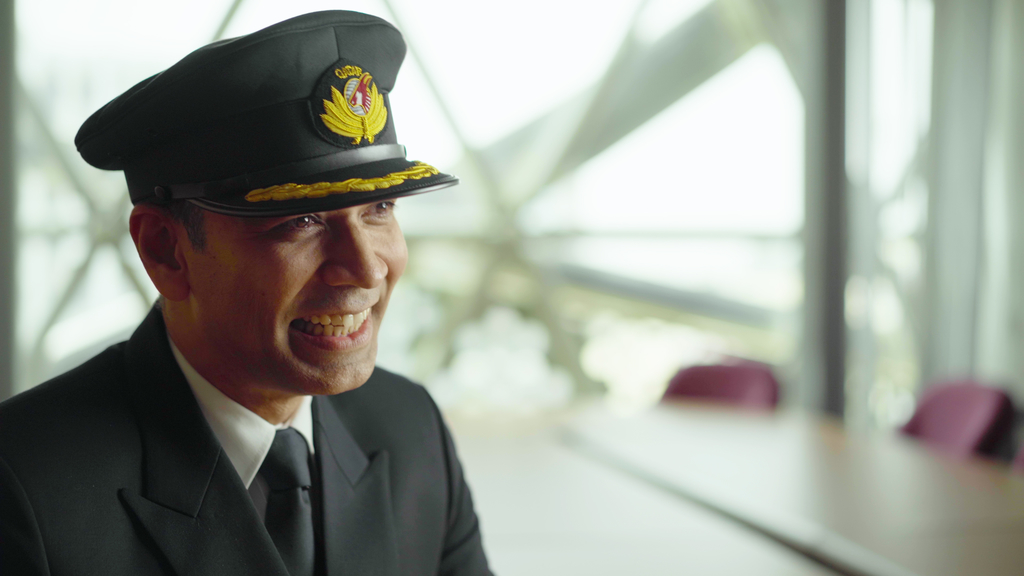
How did you become a pilot?
I was seventeen years old when I started flying. I trained in the US for my initial commercial pilot’s licence. At that time, in the early nineties, Indian airlines were going private, and I joined one of those the first. I moved to several other Indian airlines before joining Qatar Airways.
What do you like best about living in Qatar?
The focus on education, healthcare, the things that would make a difference to a person’s life – and a family life – that is what swung the decision for me. My absolute favourite thing about Doha is the people. It is home because of the people here. From the day I stepped out into Doha, I have never felt like an outsider. It is a welcoming, inclusive society, and I love that.
Are there any drawbacks to your lifestyle?
Most people think that pilots have an extremely glamorous life. It is glamorous, but people don’t appreciate the amount of hard work that goes into flying. Studying and keeping in touch with advances, planning our rest patterns, making sure we stay healthy for our medicals – there is a lot of behind-the-scenes work. We also miss family birthdays and celebrations at times. It is a difficult life in some ways, but if you are willing to make those sacrifices, it is a wonderful life too.
This year is the Qatar-India Year of Culture – what can Qataris learn from Indians?
Attitude to life – we love life and love to celebrate. Everything in India is a reason to celebrate. There are so many Indians here in Doha that you can see all aspects of Indian life here.
I don’t feel separated from home. For me this place is home. It has given my family and me a lot, in terms of what I have been able to provide for my children education-wise and a secure future. Now it is my turn to pay back, and give Qatar Airways my best for as long as I can.
What is your advice for aspiring pilots?
Pick your career path carefully. I have seen people pick an airline because they would rather be based in a particular place. You should pick an airline that will offer you career opportunities that will allow you to grow. Qatar Airways offers you the chance to fly the newest planes on the market. It offers you extraordinary opportunities. I’ve met people from countries I didn’t know existed.
Michelin-starred chef Vineet Bhatia is accustomed to serving food at altitude. He is an advisor to Qatar Airways’ menu team and his new restaurant, Indego 360 by Vineet, overlooks Doha 41 stories in the sky.
“The views here are absolutely stunning,” he says from Indego 360, his restaurant located in Tower 1 in Abraj Quartier in the Pearl. “You can see Downtown, the Pearl, and beautiful uninterrupted 360-degree views of Doha. When I first stepped into the space, a Qatar Airways aircraft flew by and my heart started pounding with joy. You can’t get much better than this.”
Bhatia has a lifelong love of airplanes. Born in into a middle-class family in Mumbai in 1967, he explains: “When I was a young child, I didn’t have an alarm clock. I didn’t need one. I was awakened at six-thirty each morning by the roaring engines of the DC-10 that took off from the airport near our house in Bombay, India.
“I still remember those airplanes, not only because they were how I began each and every day, but also because my ambition at that point in time was to fly jets. I was always fascinated by them. I rode to school on a bicycle and I’d pass by a small flying club and stare endlessly at the Cessnas taking off and landing, marvelling at their speed and their aura of luxury.”
Indeed, Vineet wanted to become a pilot, and applied to the Indian Air Force. “I became a chef by mistake,” he jokes. “I wanted to be a pilot originally. I was told I was too short to fly a plane,” he says. “They turned me down.”
“Then I wanted to be a barman, and they said I was too short to stand behind a bar counter, so they put me in the kitchen. That was the best thing that ever happened to me. It was 1985, I fell in love with it, now I cook for a living.”
This is something of an understatement. On the advice of his parents, Vineet also acquired a degree in economics. He trained with the Oberoi Group, worked in some of London’s most renowned Indian restaurants, including the Star of India, and now runs his own glittering culinary empire.
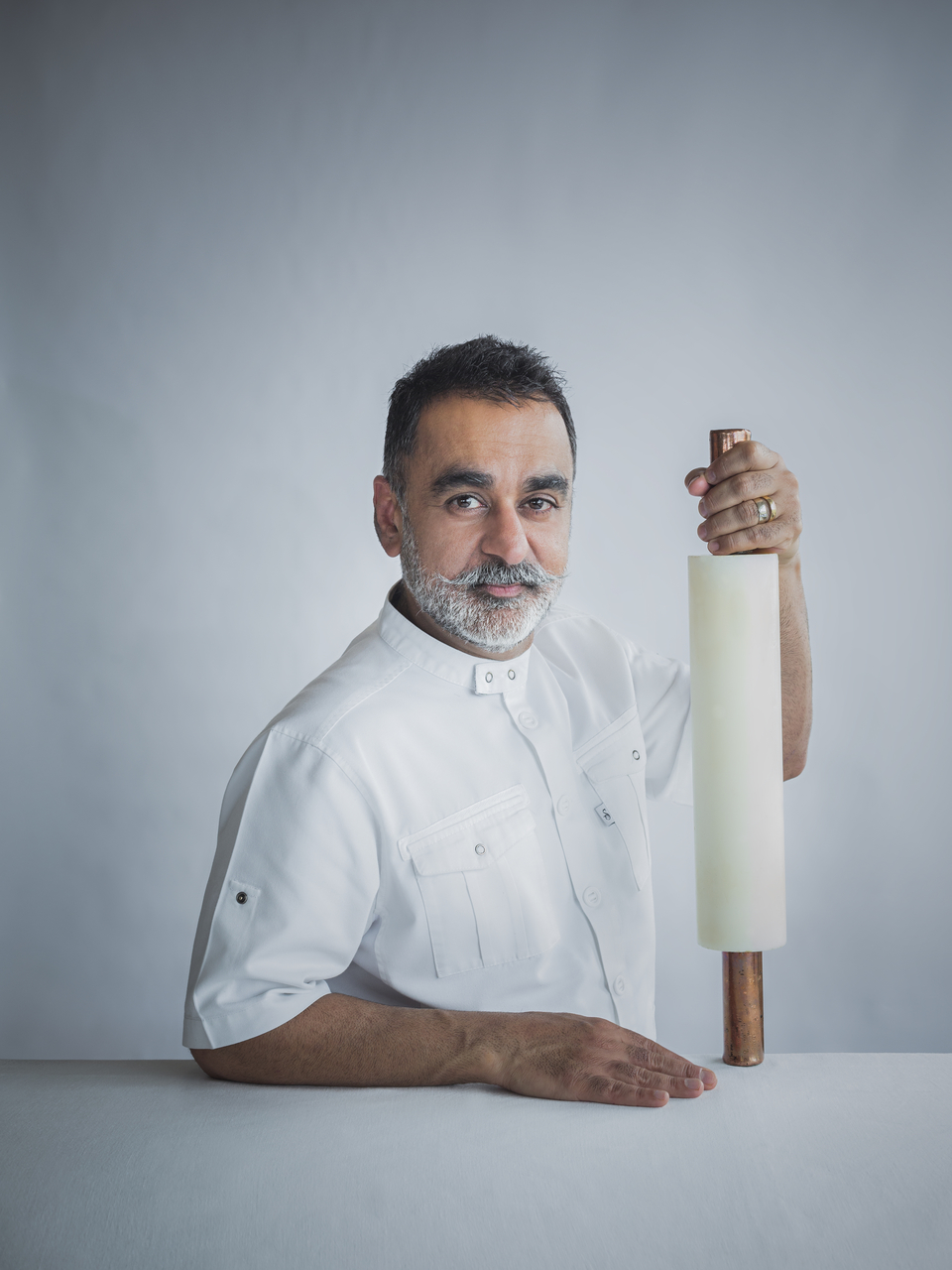
In 2004, he opened his first restaurant, Rasoi, in London’s Chelsea with his wife, Rashima. It has received numerous international accolades, and he now owns nine restaurants worldwide.
A pioneer in the kitchen, Vineet was the first Indian chef to win a Michelin star. He has written two cookbooks and had his own TV shows.
He also advised British Airways on its menus. He says: “I moved to London because of Heathrow Airport, so I could see the planes. I used to live under the flight path of the Concorde, and every evening I would watch it fly past. On the last flight of the Concorde, they served my chocolate dessert.”
In 2009, he was named one of the 1,000 most influential Londoners for his cuisine, which he describes as “evolved” Indian cooking.
Now, he takes inspiration from Qatar. He says: “The souq is very inspiring, a proper old-fashioned genuine souq. When I arrived here twelve years ago and walked around there, I fell in love with it.
“The aromas wafting in the air, the spices, the culture, the fabrics, the people, the falcons. You also get to see what the locals like to eat, because we always incorporate things from the local culture into our cuisine.”
He adds: “There is a cross-flow of ideas. Here in Qatar, we use za’atar leaves, sumac powder, rose petals, pistachios. We had on our previous menus a Pearl biryani, our nod to Qatar – we made small pearls out of vegetables, wrapped in silver leaf. It was quite stunning.”
He says the historic links between Qatar and India made Doha the natural home for his most ambitious venture.
“Because of the association Qatar has had with India for so many years, Qataris understand Indian cuisine,” he says. “It is no problem sourcing things like spices. There are new Indian restaurants popping up all the time, because there is a demand.”
He adds: “I hope that our two nations can forge even stronger links in the future. We have already got very strong foundations.
“Qatar has changed a lot over the last twelve years, and I am very pleased to be part of the change. I would encourage Indian people to travel here, because it is a beautiful and modern city.”
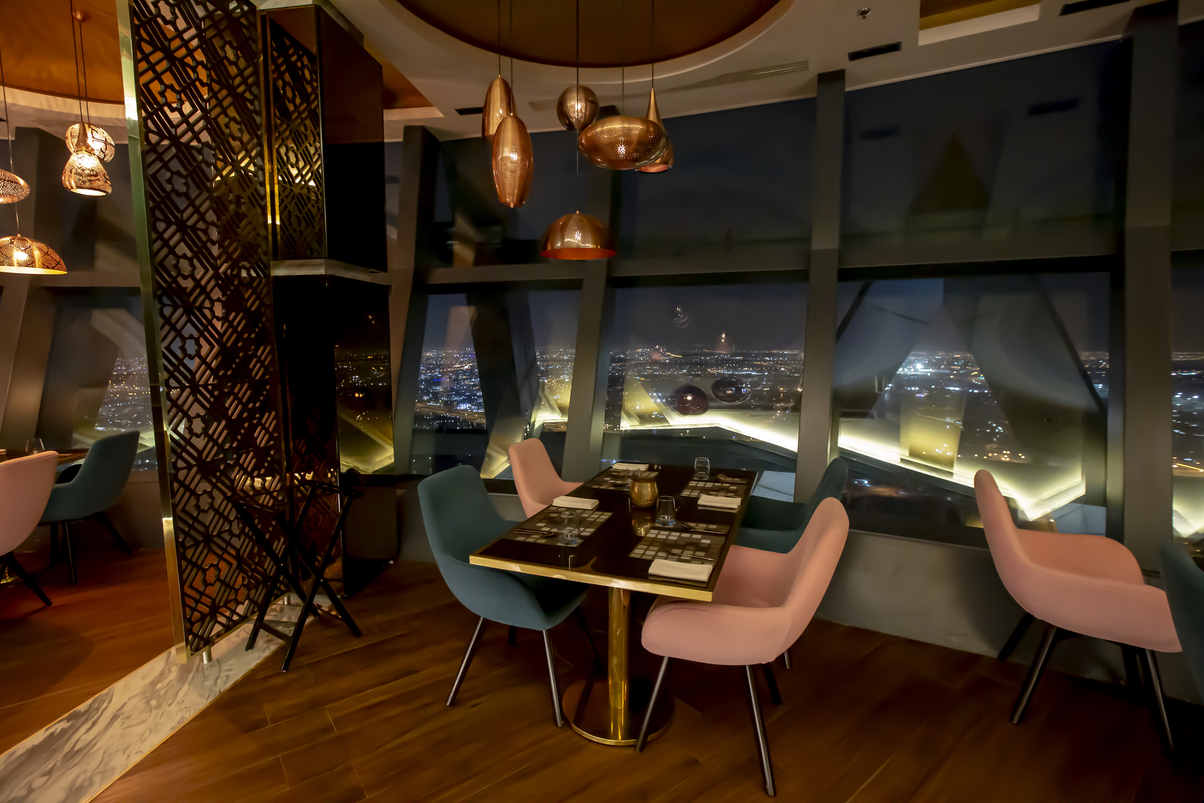
He is of course extremely proud of Indego 360, which is the tallest Indian restaurant on the Arabian Peninsula. “This is our new baby here at the Pearl,” he says. “It has been amazing to bring this concept to Doha.”
Cooking comes naturally to Vineet, whose mother is also a dedicated foodie, but he has some tips for amateurs too.
“The best tip I can give to anybody is you have got to cook from your heart,” he says. “You have to have a passion for it. And never over-complicate things. Keep it simple, keep it clean, and cook from your heart.”
And if he were to give another life lesson, it would surely be: aim high.
Challenging, reverential and pioneering in equal measure, Fatma Al Shebani uses traditional Qatari motifs to create art in a modern setting.
Can you tell us about your journey as an artist?
I like to believe that art chose me. Ever since I was a little girl, I had big questions about the nature of the world, wondering what God has created. I grew up watching this world in deep silence with a big appetite for the amazing colours that life has to offer.
At university, I turned my dreams and visions into physical sculptures and paintings. I have run exhibitions across the Arab world, and internationally from London to New York to Paris.
What has been your proudest moment since your career began?
Painting graffiti on the West Bank wall, along with my solo exhibition in Bethlehem in 2013. I interacted with the people living in Palestine, and hope that I have changed the way others think – and even perhaps encouraged other artists to follow in my footsteps.
Another proud moment was when my first sculptures were erected in public squares in Qatar.
Much of your art integrates traditional Qatari culture into a modern setting. Why is this important?
I am a rebel when it comes to art, innovation and creating new things. Most of my artwork has come from traditional concepts because I believe that through this kind of artwork, the younger generations in Qatar will still be able to visualise the culture of the past. Even now that we are living in the modern age, I hope it can still be preserved and valued.
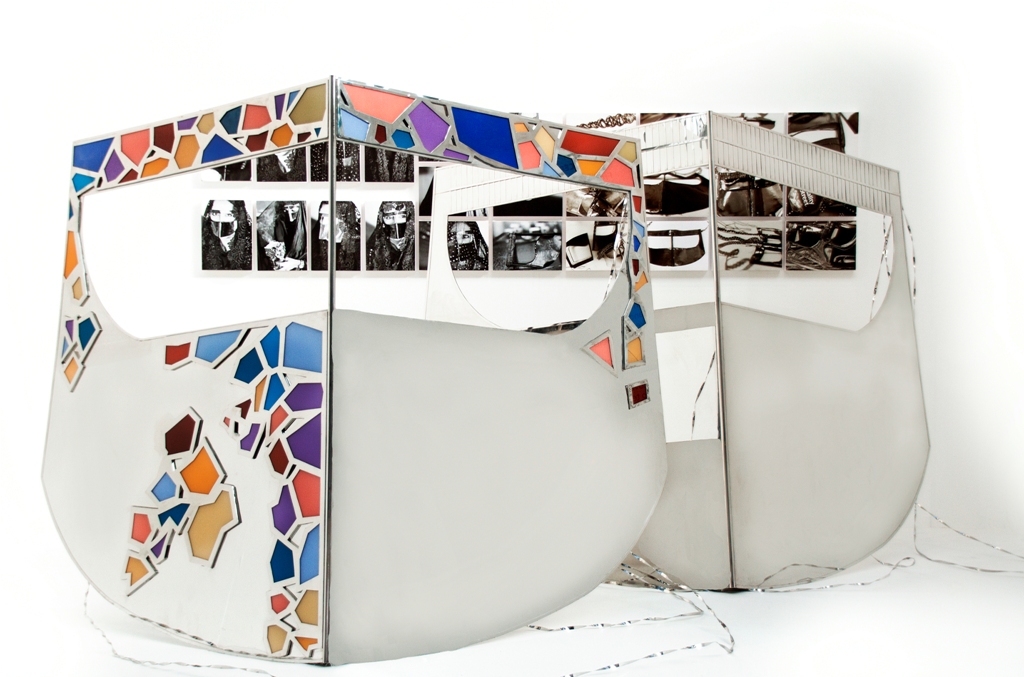
What does your Batoula art piece mean to you?
In Arabic history, the Islamic mask for married women, the Batoula, is considered an important part of any woman’s dress. It was a signal differentiating young girls and older women.
Growing up, I adored older ladies and it was always a pleasure to take a peek under their Batoula to see their faces filled with love and motherhood. I remembered the purple pigment the Batoula leaves behind on the forehead, which is said to protect the skin from ultraviolet light.
The Batoula sculpture was created while I was revisiting memories of my childhood, the simpler life and the beautiful faces I have seen covered by a mask that holds behind it many stories – especially love stories.
Recently, you also created the installation titled “The Mother”. What does it mean?
“The Mother” is a conceptual artwork inspired by our homeland. The artwork is influenced by the look and feel of the tree, where obstacles may hinder its growth and prosperity, but despite its small size, it stands tall and shades those underneath.
When you inherit the seed of glory, you inherit too the storms, earthquakes and volcanoes that come along with them, but the storms leave behind fertile land that promises a better future.
Audiences can interact with “The Mother” by writing letters to our homeland and hanging them on the barbed wire entwined around the tree to make it grow and bloom ever larger. I proposed this concept in memory of the first year of the blockade imposed on the State of Qatar on 5 June 2017.
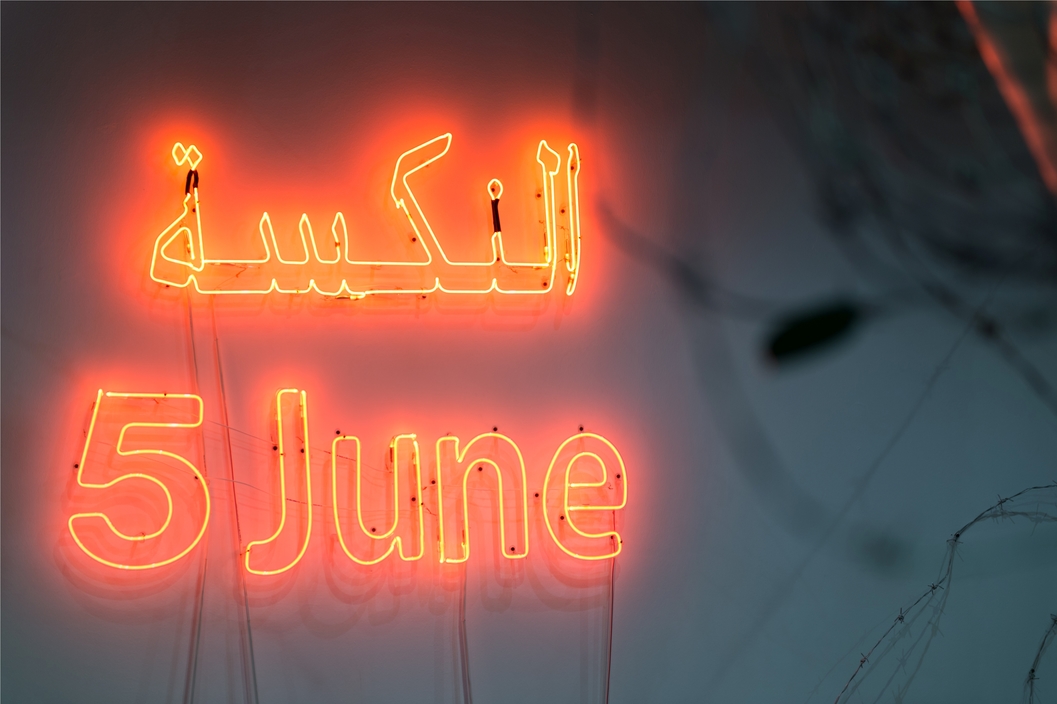
How do you see the art scene in Qatar developing over the coming years?
Qatar’s art scene is diverse and growing.
In Qatar, contemporary art is the genre of choice. We are opening museums, such as the National Museum of Qatar, which is bound to become another icon of Qatar’s glory. We have the Museum of Islamic Art, Mathaf Arab Museum of Modern Art, Sheikh Faisal Bin Qassim Al Thani Msheireb Museums, Katara Cultural Village, and many galleries.
I am glad to say, the art scene in Qatar is thriving.
With water sports popular among Qataris and expats alike, Khalifa Al Misnad cuts a dashing figure. A lawyer, creative, and entrepreneur, he mixes business life with adventure.
What inspires you?
I draw my inspiration from different aspects of life and the experiences available to me. I feel the more we experience life outside of our comfort zone, the more we can appreciate the infinite beauty that life has to offer. We take tens of thousands of breaths a day, each one can be inspirational if awareness is brought to those fleeting moments, so I always try and find inspiration through slowing down and being more conscious.
How did you become passionate about water sports?
With Qatar being a peninsula, I always wanted to explore what our sea had to offer. I first tried scuba diving, and then came across kitesurfing, which is a relatively new sport. Qatar has a historic connection to the sea through pearl diving, and since we’ve moved on from the trade, there is a danger that this connection will be lost. Kitesurfing allows me to re-connect with the elements.
It’s an incredibly freeing sport as you can control your movement both horizontally and vertically, but also very freeing from a mental and spiritual perspective. Qatar could be a destination for kitesurfers internationally as the wind and temperature conditions are ideal. We’re also seeing a growing number of Qataris getting involved in sports that will lead them back to the water, and there are fantastic sports initiatives by Sheikh Jassim bin Hamad bin Khalifa Al Thani that encourage Qataris to reconnect with our environment.
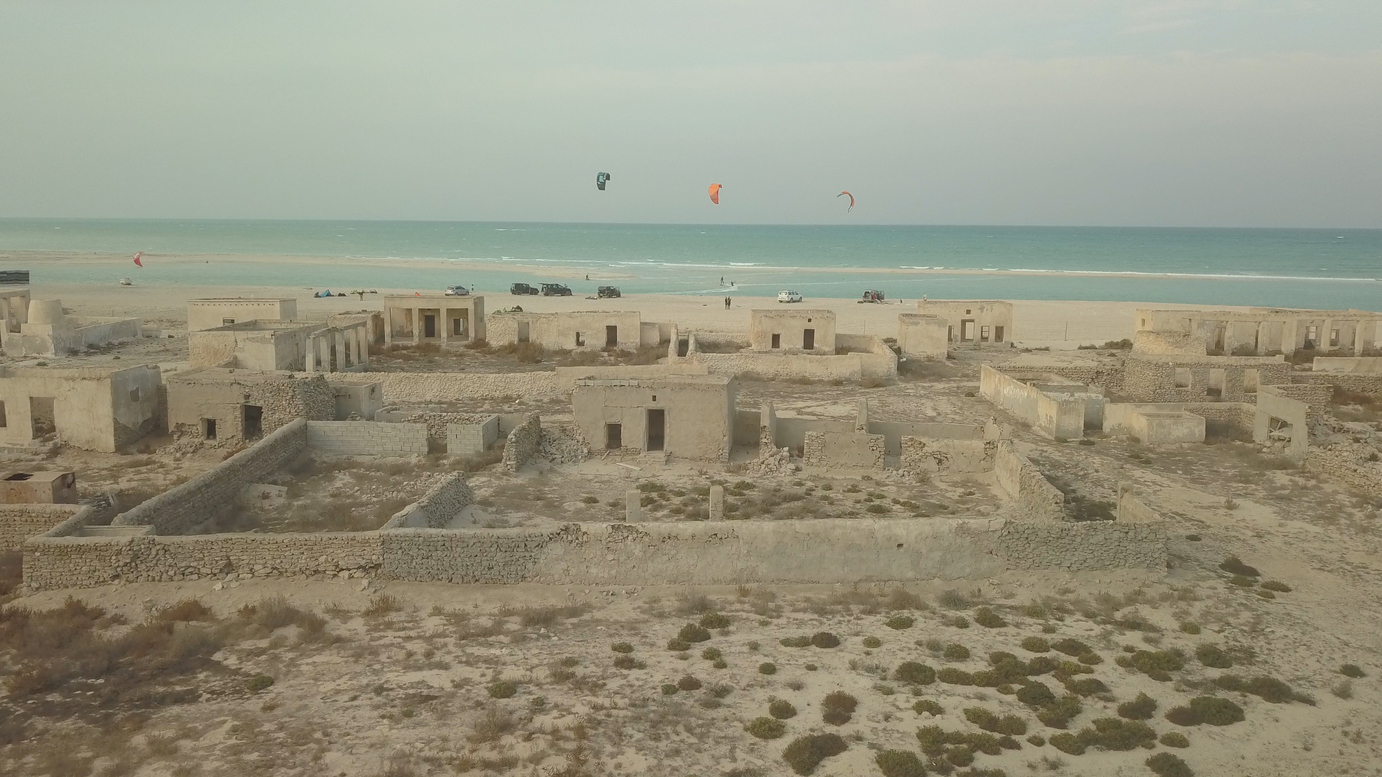
How do you juggle being an entrepreneur with kitesurfing and other leisure activities?
We all look for some form of financial stability, yet it’s important we devote energy to our self – the building block that will influence health, relationships, and overall life. Working as an entrepreneur can really consume you, so it’s important to build a great team and culture around you to help find balance in life. Kitesurfing is one of my many hobbies and I love to do it in Qatar, which has some of the best kitesurfing conditions in the world.
How has the mix of being an entrepreneur, a creative, and sports fanatic made you into the person you are today?
As a teenager, I played basketball for the Qatar National Team. Sports helped me to develop discipline, teamwork, leadership, and good health. I started my entrepreneurial journey while studying mechanical engineering and following it up with a master’s degree in law, which taught me about perseverance and finding balance. I then worked as an in-house legal counsel for Qatar Petroleum, where I had the opportunity to travel. Through travel I picked up photography, which really taught me how to “frame” the world around me in a different way.
Now I’m getting back into competitive sports and have been running around the world – my last race was 190km in Qatar. I feel as though my experiences have really opened the world to me and I have learned how to appreciate the fundamental miracles around us.
How can Qatari youth build a successful career, whilst also following their adventurous dreams?
I do not believe that a career and an adventure should be looked at in isolation, and I have not followed a stereotypical career path. As humans we tend to follow the path of least resistance and often conform to external pressures. It’s important to challenge our assumptions, and to do so, we need to venture out of our comfort zones to connect with our raw selves. In Qatar today, we live extremely comfortable lives in comparison to our ancestors, and we need to make it a point to venture into the unknown to find the pearls.
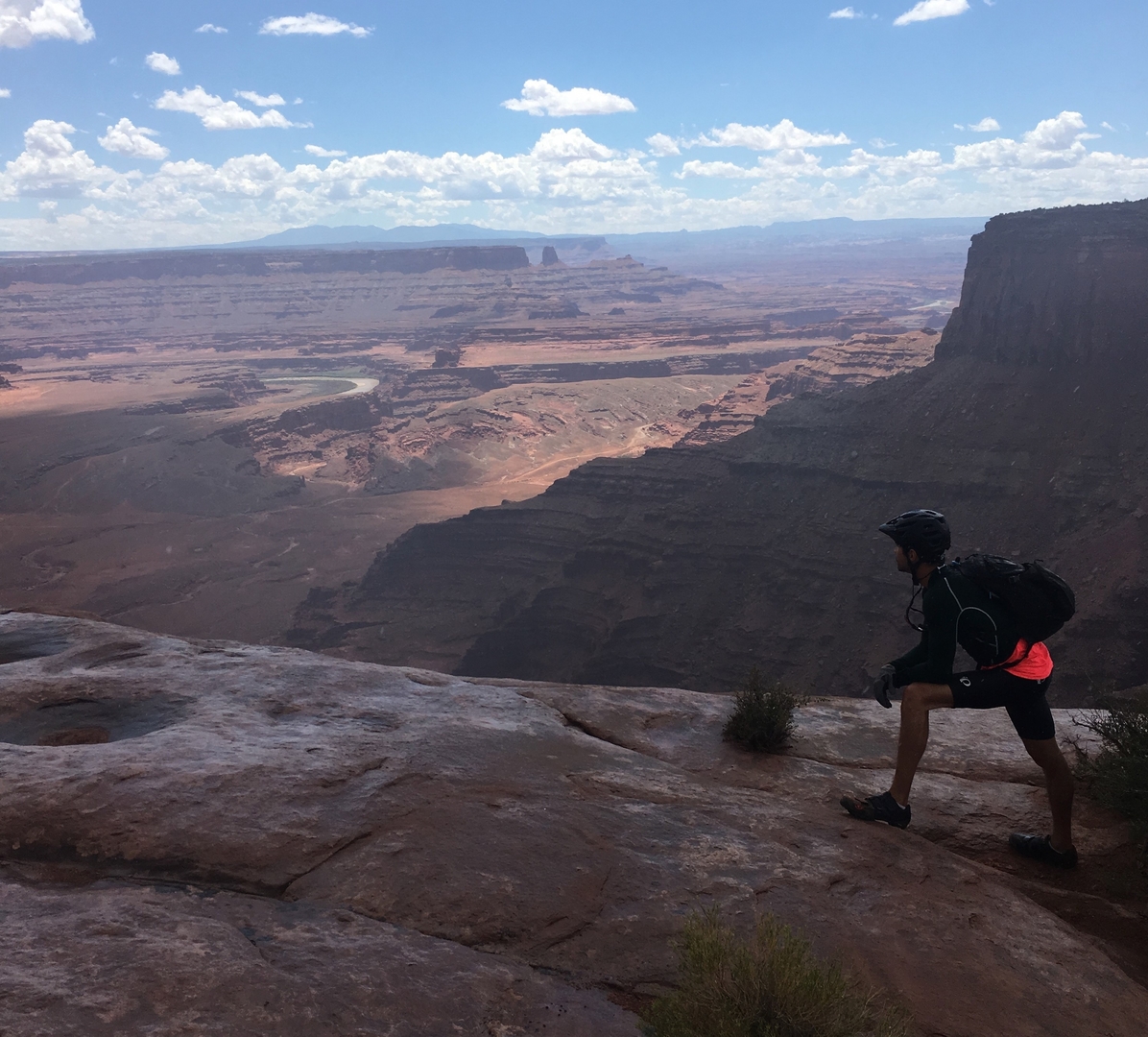
Since its establishment in 2013, TriClub Doha has grown a loyal following. We spoke to director Ewan Cameron to take a closer look at how the club is supporting Qatar’s vision of sporting success through community initiatives.
The true pinnacle of sporting achievement is the triathlon. The glory of a three-part race across land and water is hard to beat. But as residents of Doha have discovered, it need not be daunting.
Ewan Cameron, director of TriClub Doha explains: “A triathlon is a race where the participants will swim, cycle and run to the finish line, typically in that order. It can be done as an individual or as part of a team.”
Race lengths range from short distances which can take 20 minutes, to the full Ironman level, where athletes can take up to a full day to swim 4km, cycle 180km, and run 42km.
“That’s the epic event for a triathlete,” says Ewan. “The race length we typically do takes an hour to an hour and a half, with a 500m swim, a 20km bike ride, and a 5k run.”
A decade ago, the triathlon did not exist in Qatar. TriClub Doha was formed by a group of expat athletes in 2013. They were training to compete in triathlons abroad and decided to develop an event in Qatar.
“It was hard to convince people to try something new at first,” recalls Ewan, who lives and breathes triathlons, “but we got around 100 people together at Aspire Zone in 2013, which quickly grew to 250 people, and it continued to grow.”
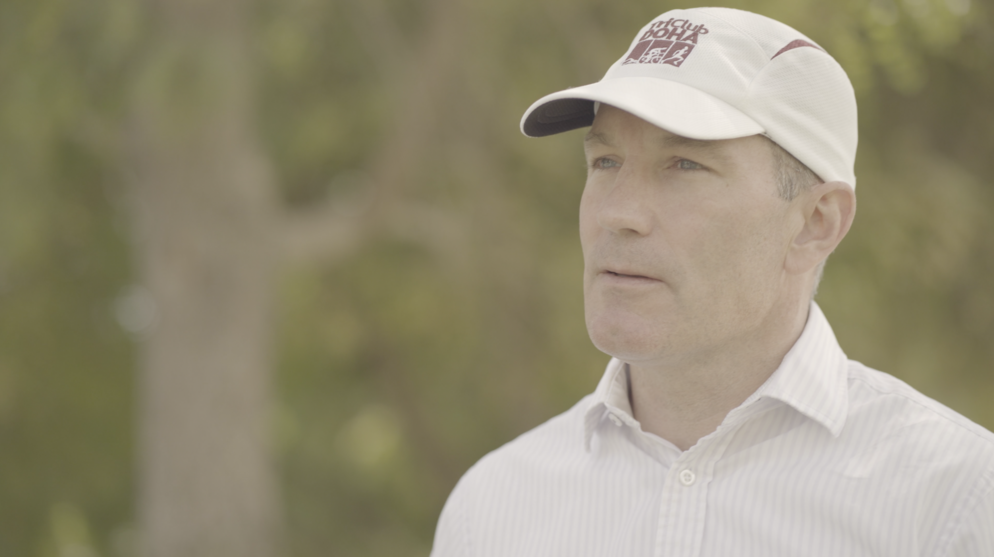
The Qatar Olympic Committee soon got involved, setting up a Qatar Triathlon Federation, which has started to organise triathlons on the Pearl, the Corniche, and at the Museum of Islamic Art Park.
The largest event took place at Qatar Foundation in early 2019, with 470 participants. “It’s been great fun seeing lots of people join in,” says Ewan. “At the first event, there were ten kids. At the last race, there were more than 200 youngsters, trying all three disciplines. They get a medal when they cross the finish line, and a T-shirt. They’re always happy.”
TriClub Doha, which is run by volunteers, is an extraordinary success story. Cameron says: “This year we’ve held four triathlons, four aquathlons – just swim and run, and four duathlons – a bike and run. Plus a running series.
“The Doha triathlon is an event we helped set up two years ago, working with the Museum of Islamic Art, which is the perfect venue because you can run around a beautiful park, you can swim there, and then bike along the Corniche.
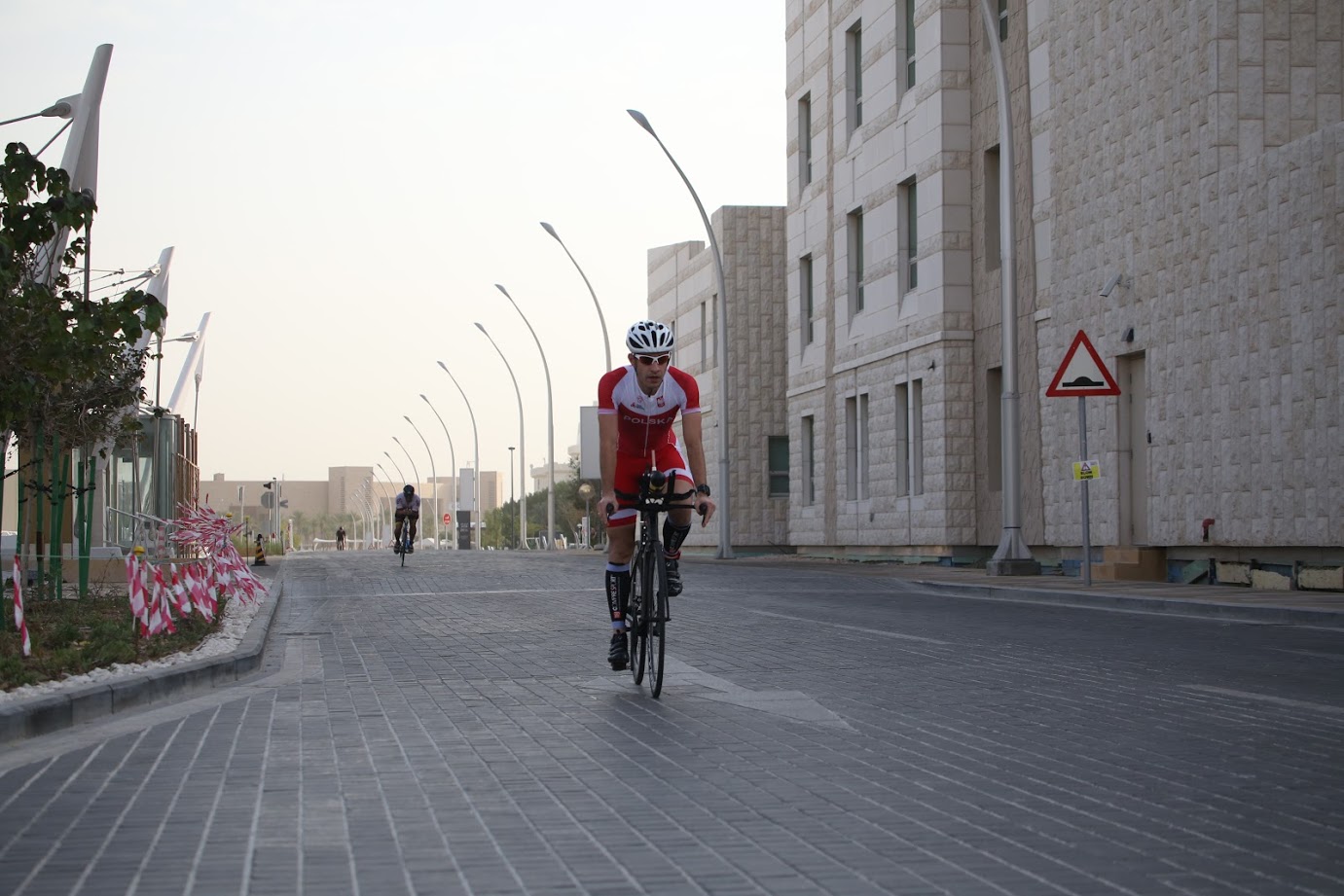
“Our first event in 2017 was an Olympic distance triathlon, that was promoted internationally, and attracted people from overseas to compete.”
He describes how some become addicted to the sport, while others achieve distances they never imagined possible.
“The more experienced triathletes get hooked,” he says. “Recently, some TriClub members took part in the Ironman 70.3 in Muscat, with a 2km swim, 90km bike ride, and a 21km run.
“That requires a good three months training, but it’s achievable for all ages, shapes and sizes.
“We’ve seen lots of people who never conceived of doing a triathlon in their whole life, and they come along with their kids, because the kid got an email from school. Then they think: ‘I could try that too’.
“They start with the beginners’ distance, a year later they’re entering the Ironman in Muscat. We’ve seen many of our participants go through that evolution in the course of a year.
“It’s hugely addictive, there’s a big adrenaline rush when you cross the finish line in a race you’ve been training for.”
Indeed, Ewan has worked hard to achieve his own goal. He says: “I wanted to do a half Ironman in under five hours. Two and a half years ago I worked with a coach and did the half Ironman in Bahrain. I was able to achieve a time of 4.47, which was more than 17 minutes better than my previous best.”
He jokes: “I was really proud of that achievement, but did realise it would be very difficult to ever achieve that again.”
Hamad International Airport is Qatar’s gateway to the world. Qatar’s modern border system and revolutionary visa programme have made it the most open country in the Middle East, according to the United Nations World Tourism Organization.
With a 20 per cent higher check in rate year-on-year, Hamad International Airport’s passenger traffic continues to grow. This is no surprise to the Ministry of Interior’s Airport Passport Department, which has been preparing for this influx through the nation’s flagship terminal at Hamad International Airport.
“Qatar’s visa programme has gone through a quantum leap”, says Director of the Airport Passports Department, Colonel Mohammed Rashid Al Mazrouei.
The Ministry of Interior has always aimed to stimulate tourism in the country, says Colonel Al Mazrouei. The Airport Passports Department facilitates entry and exit procedures, he adds, implementing a modern electronic system to ease travel woes.
Even the most experienced globetrotter will encounter hiccups along the way, including lost or expired visas and residency permits. To further assist passengers and save their time and effort, an office was opened at the airport to facilitate access to the services provided by the Visa Entry Department. The office works to overcome travellers’ struggles, including the renewal and cancellation of residency, the amendment of visa entry, and the extension of visas.
In an effort to speed the overall process and to ensure passengers make their flights, Qatar now issues ‘On Arrival and In Advance’ visas for citizens from 92 countries. This visa system promotes tourism and further positions Qatar as a holiday destination, in collaboration with Qatar Airways and the National Tourism Council.
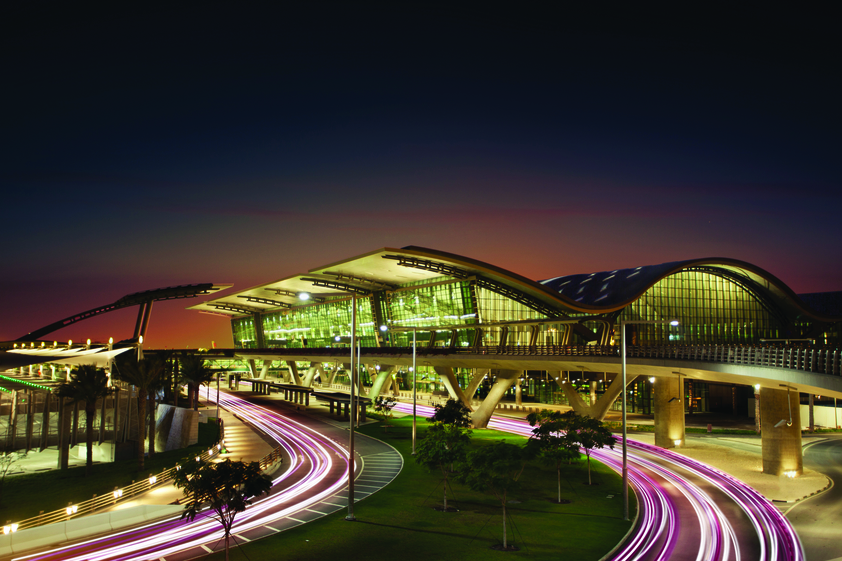
Now, this openness is being celebrated globally. The United Nations World Tourism Organization last year announced that Qatar has become the most open country in the Middle East and the 8th most open in the world in terms of visa facilitation.
Colonel Al Mazrouei says that this contributes significantly to the promotion of tourism in Qatar, making the country a truly modern destination on the global tourism map.
With the increase in passengers from around the world, the Airport Passports Department has worked hard to ensure it can accommodate this growth. Logistically, Colonel Al Mazrouei explains that the electronic gates – known as e-gates –facilitate movement for citizens and residents alike.
The gates are one of the most important updates in the new border system provided by the Ministry of the Interior through Hamad International Airport. In total, 2.3 million people used the new gates in 2018.
Colonel Al Mazrouei explains that the Airport Passports Department has adopted several new systems that contribute to making the facilities at Hamad among the most advanced in the world, offering Qatari citizens, residents and tourists a seamless experience as they embark on their next journey.